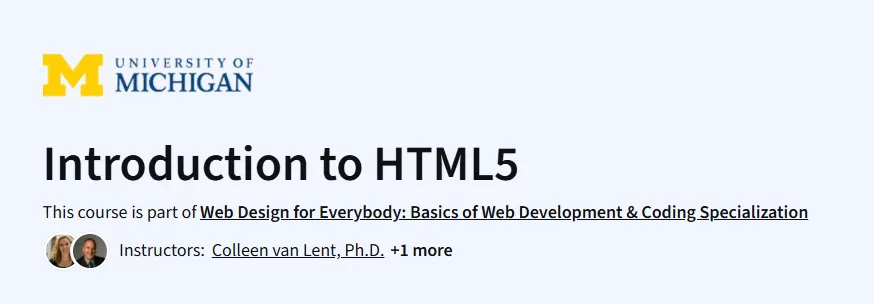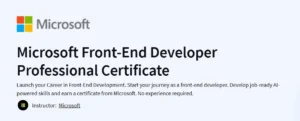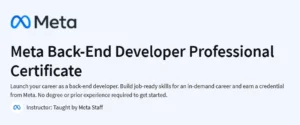What will you learn in Introduction to HTML5 Course
Build and structure web pages using basic HTML tags and elements.
Understand document structure, forms, images, tables, and links.
Apply semantic HTML for accessibility and SEO benefits.
Create and publish simple HTML pages using live online editors.
Program Overview
Module 1: HTML Basics
⌛ Duration: 1 week
• Topics: HTML document structure, headings, paragraphs, lists, links
• Hands-on: Create a basic webpage using headings, paragraphs, and links
Module 2: Formatting & Images
⌛ Duration: 1 week
• Topics: Text formatting tags, alt text, embedding images
• Hands-on: Insert formatted text and images into your HTML page
Module 3: Tables & Forms
⌛ Duration: 1 week
• Topics: Table tags, form inputs, buttons, labels, submission
• Hands-on: Build a registration form with various input types
Module 4: Semantic HTML & Accessibility
⌛ Duration: 1 week
• Topics: HTML5 semantic elements (header, footer, nav), accessibility best practices
• Hands-on: Update your webpage using semantic tags and verify accessibility
Get certificate
Job Outlook
Fundamental for any web developer or front-end designer role.
Valuable in fields like content design, digital marketing, and UX.
Jobs requiring HTML skills include Web Developer, Front-End Engineer, QA Tester.
Starting salaries range from ₹3 LPA (India) to $55K+ (US).
Supports freelance, website builder, and portfolio-building opportunities.
Specification: Introduction to HTML5
|
FAQs
- No prior experience required; beginner-friendly course.
- Covers HTML document structure, headings, paragraphs, lists, and links.
- Introduces semantic HTML for accessibility and SEO benefits.
- Includes hands-on practice with live web editors.
- Ideal for learners wanting to build static web pages or personal portfolios.
- Teaches semantic HTML elements like header, footer, nav, and section.
- Explains best practices for alt text and proper labeling of elements.
- Covers structuring content for improved SEO performance.
- Includes practical exercises to apply accessibility principles.
- Prepares learners to create web pages compliant with accessibility standards.
- Builds foundational skills for web developer or front-end engineer roles.
- Useful for UX designers, content creators, and QA testers.
- Supports freelance website building and portfolio creation.
- Enhances understanding of web structure for advanced web technologies.
- Prepares learners for further learning in CSS, JavaScript, and responsive design.
- Four modules, each approximately 1 week long.
- Covers basics, formatting & images, tables & forms, semantic HTML & accessibility.
- Self-paced learning allows flexible schedules.
- Includes hands-on exercises for each module.
- Suitable for learners seeking structured, short-term web development training.
- Build complete web pages with headings, paragraphs, images, links, tables, and forms.
- Apply semantic tags to improve structure and accessibility.
- Practice live coding in online editors without software installation.
- Receive feedback on hands-on exercises to refine skills.
- Prepares learners to independently create and publish static web pages.





